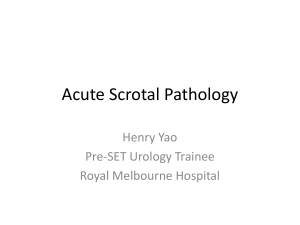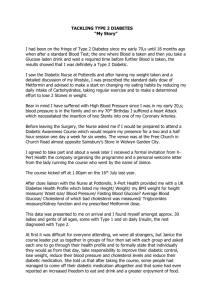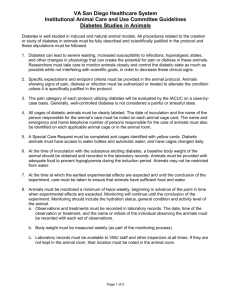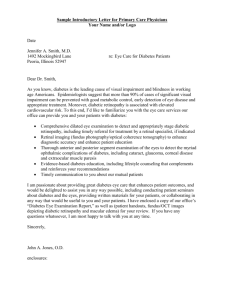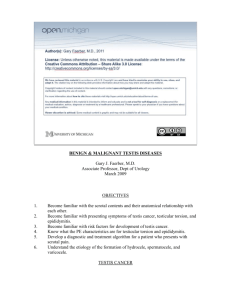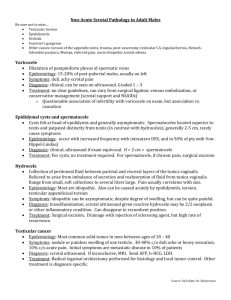Microsoft Word
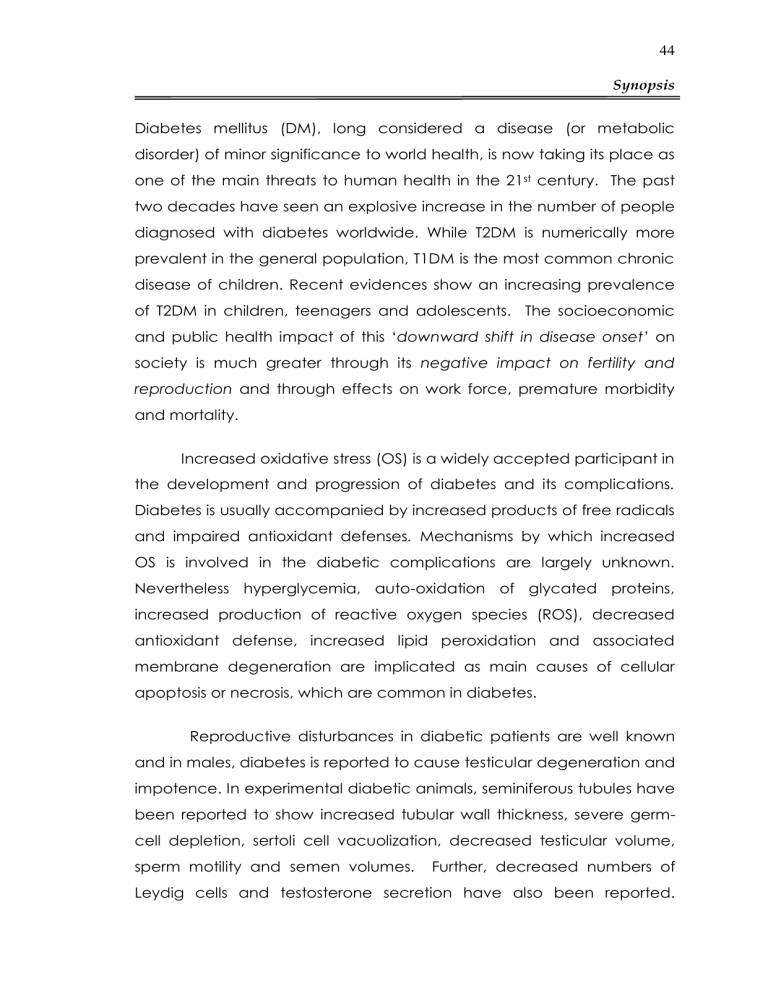
44
Synopsis
Diabetes mellitus (DM), long considered a disease (or metabolic disorder) of minor significance to world health, is now taking its place as one of the main threats to human health in the 21 st century. The past two decades have seen an explosive increase in the number of people diagnosed with diabetes worldwide. While T2DM is numerically more prevalent in the general population, T1DM is the most common chronic disease of children. Recent evidences show an increasing prevalence of T2DM in children, teenagers and adolescents. The socioeconomic and public health impact of this ‘downward shift in disease onset’ on society is much greater through its negative impact on fertility and
reproduction and through effects on work force, premature morbidity and mortality.
Increased oxidative stress (OS) is a widely accepted participant in the development and progression of diabetes and its complications.
Diabetes is usually accompanied by increased products of free radicals and impaired antioxidant defenses. Mechanisms by which increased
OS is involved in the diabetic complications are largely unknown.
Nevertheless hyperglycemia, auto-oxidation of glycated proteins, increased production of reactive oxygen species (ROS), decreased antioxidant defense, increased lipid peroxidation and associated membrane degeneration are implicated as main causes of cellular apoptosis or necrosis, which are common in diabetes.
Reproductive disturbances in diabetic patients are well known and in males, diabetes is reported to cause testicular degeneration and impotence. In experimental diabetic animals, seminiferous tubules have been reported to show increased tubular wall thickness, severe germcell depletion, sertoli cell vacuolization, decreased testicular volume, sperm motility and semen volumes. Further, decreased numbers of
Leydig cells and testosterone secretion have also been reported.
45
Synopsis
However, the pathophysiological mechanisms of testicular dysfunctions in diabetic situations are largely unknown. More importantly the possible involvement of OS mechanisms and their contribution towards diabetes associated male reproductive dysfunctions are poorly understood.
In the male reproductive system, ROS and free radicals have been ascribed certain regulatory roles as they can modulate some of the structural and morphological changes that the mammalian spermatozoa undergo during their maturation and development.
Mammalian testis is anatomically and physiologically more prone for
OS. Although, testicular cells are endowed with various antioxidant defenses their efficiency is restricted due to their limited concentration and varied distribution. Sperms are even more vulnerable to OS as they are endowed with more of PUFA, superoxide anion generating system in their membranes, less antioxidants and less repair capacity. An elevated production of ROS in testis either of exogenous or endogenous origin can lead to alterations in tissue physiology or cause oxidative damage to DNA, which is of potential risk to the offspring.
In view of the above, currently, OS has become the focus of interest as a potential cause of male infertility. There is paucity of data on the involvement of OS mechanisms in testis under diabetic situations has not been comprehensively investigated. Further, under different degree/duration of diabetic state, data on the perturbations of antioxidant levels in testis and the physiological/biochemical implications that may lead to testicular dysfunctions is lacking. Hence there is a need to understand the occurrence and role of oxidative damage in testis during different phases of diabetes (early and progressive), impairments of antioxidant defenses, susceptibility of sperms to OS, and their genotoxic consequences. Only such an
46
Synopsis understanding will aid in developing therapeutic strategies to ameliorate the reproductive dysfunctions in diabetic situations.
Hence, it is hypothesized that “the testis under diabetic situations is likely to be subjected to significant oxidative stress and this mechanism may be partly or wholly responsible for the testicular dysfunctions”. Accordingly, the scope of the present investigation is (1) to understand the involvement of oxidative stress mechanisms under conditions of diabetes associated male reproductive dysfunction and determine its implications on physiology and function of testis (2) to investigate the occurrence of early oxidative damage in testis, its progression and its genotoxic consequences and (3) to examine the propensity of biomolecules to protect testicular tissue from diabetesinduced oxidative damage.
1.
Our principle findings viz., enhanced lipid peroxidation, higher ROS levels, alterations in key non-enzymic antioxidants (vit E and GSH) and activities of enzymic antioxidants (CAT, SOD, GST, GPx and GR) in testis of adult diabetic rats (rendered diabetic by STZ) clearly demonstrate the occurrence of significant oxidative stress (OS) in the testis during early (week 1) and progressive phase
(week 2 onwards).
2.
The degree of oxidative damage in testis although marginal during the induction phase, was progressive and consistently higher at week 4 and beyond and was associated with varying degree of pathological lesions (evident beyond 3-4 weeks).
3.
Elevation in the protein carbonyl content, marked reduction in the testicular dehydrogenases accompanied with altered lipid metabolism (in terms of increased
47
Synopsis cholesterol and phospholipids) are indicative of diabetes associated disturbances in testicular physiology.
4.
Sperms sampled at various weeks from the epididymis exhibited varying degree of oxidative impairments indicating their vulnerability to diabetes induced oxidative stress. Although speculative, the excessive and repeated OS in the epididymal milieu is likely to affect the post-testicular maturation process of sperms and their subsequent functional competence.
5.
Taken together, we interpret our data to mean that excessive oxidative insult in the testis and epididymal milieu in adult rats may participate as well as contribute significantly to the development of various diabetes associated male reproductive dysfunctions and thereby emphasizes the need and scope for further investigations in this area.
6.
Our data in growing diabetic rats are suggestive of the increased susceptibility of the developing testis to oxidative damage as evidenced by consistently enhanced
MDA and ROS levels, elevated mitochondrial ROS production and increased formation of protein carbonyls.
7.
Depletion of reduced GSH levels and dramatic elevation in testicular GST activity in testis suggested the involvement of GSH pathway in regulation of diabetes associated oxidative stress in developing testis.
8.
Hyperglycemia in growing testis was associated with significant perturbations in testicular lipid dysmetabolism and is likely to have direct impact on the testicular steriodogenesis, which merits further studies.
9.
Induction of oxidative damage in developing testis was nearly 2-4 fold higher at early sampling times (week 1 and 2) when compared to the moderate damage in adult testis evident at similar sampling times. The dramatic elevation (4.5 fold) of testicular GST suggests the magnitude of oxidative impact occurring in vivo and merits further investigation.
48
Synopsis
10.
Our studies clearly demonstrate the induction of early (3/ 5 days) oxidative damage in the testis of diabetic mice model which was detectable in terms of selected biochemical markers such as lipid peroxidation, increased generation of
ROS levels, perturbations in GSH levels, alterations (reduction) in antioxidant enzymes and enhanced protein carbonyl levels.
11.
The early oxidative damage was not confined only to the testicular milieu, since major oxidative dysfunctions were also discernible in the epididymal sperms during early time points emphasizing the dual targets of diabetes induced OS in the male reproductive system.
12.
Interestingly, STZ-induced early oxidative damage in mice was amenable for amelioration by short-term oral treatment with antioxidants viz., AA and TAU.
Both antioxidants provided total protection by inhibiting lipid peroxidation and generation of ROS in testicular homogenates/ mitochondria and restoration of antioxidant enzymes to varying degree.
13.
During the progressive phase, increased LPO in mice testis was accompanied by decreased serum testosterone levels, reduced sperm numbers and varying degree of pathological alterations which are attributable to a combined consequence of impaired steriodogenesis and spermatogenesis.
14.
High levels of ROS in ES correlated with an increased incidence/ magnitude of abnormal sperms and DNA damage, which are indicative of derangements in the regulation of spermiogenesis.
15.
Induction of stage–specific DL type mutations during the first three weeks of mating in diabetic male mice suggested that the primary targets are the postmeiotic germ cells (sperms and spermatids). While it is difficult to delineate the primary genotoxic effects of STZ and OS mediated effects, nevertheless, this data is indicative of the wide range of genotoxic consequences likely to occur under diabetic situations.
49
Synopsis
16.
Oral supplementation of ferulic acid to diabetic rats over a 4-week period significantly offset diabetes-induced oxidative damage in testis measured in terms of MDA/ ROS levels, activities of AOE (GR/GPX), GSH levels and formation of protein carbonyls.
17.
Supplementation of
-carotene in diabetic rats also markedly mitigated the diabetes-induced oxidative damage in testis as indicated by various biomarkers of oxidative damage measured.
18.
Dietary supplementation of FB seed powder to diabetic rats showed no hypoglycemic effect, while it offered significant degree of protection against oxidative stress in both testis and liver, and ameliorated the diabetes associated lipid dysmetabolism in testis.
